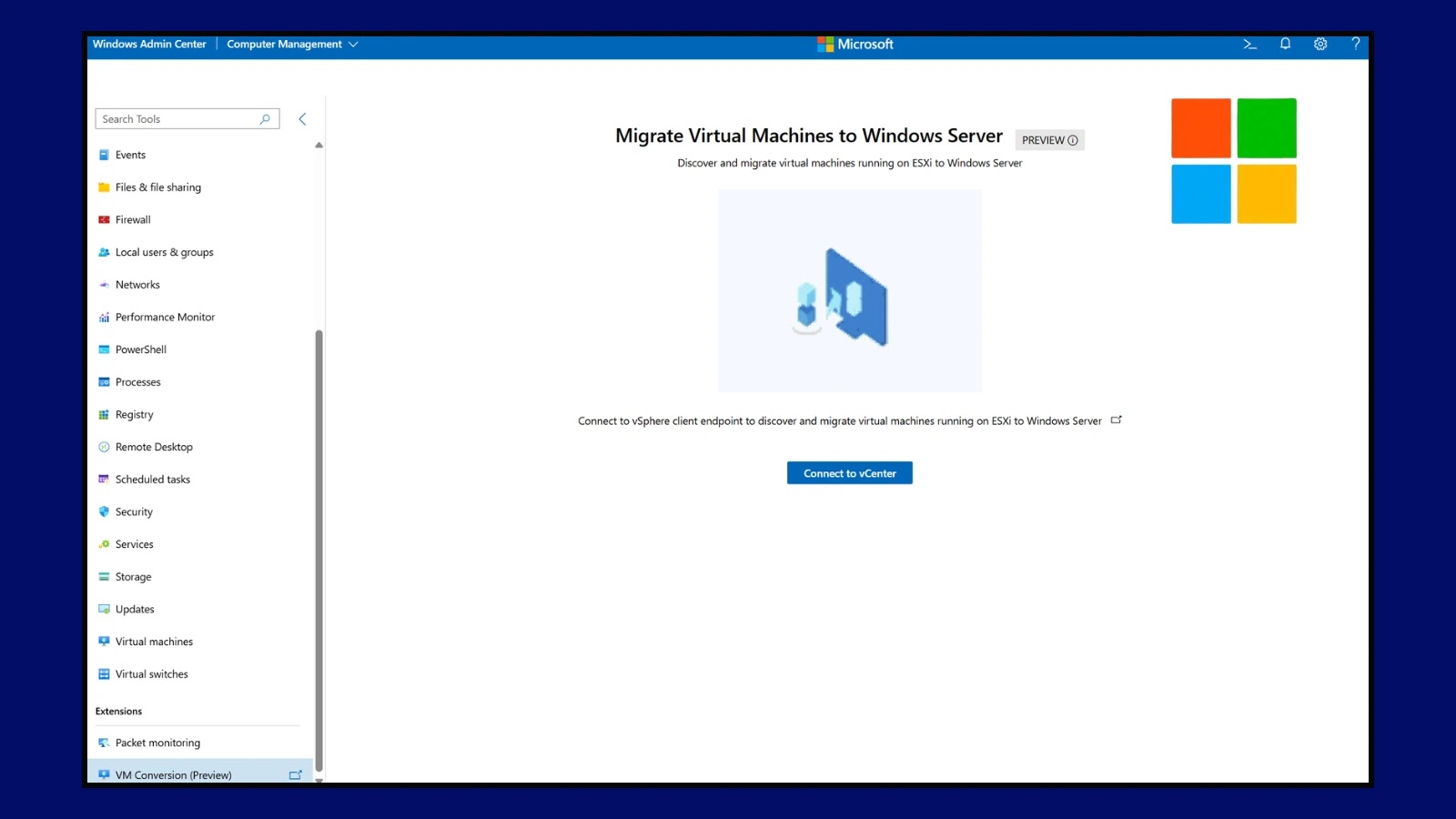
Microsoft Unveils New Tool to Migrate VMware Virtual Machines From vCenter to Hyper-V
Microsoft Simplifies VMware to Hyper-V Migrations with New Windows Admin Center Tool
In the dynamic landscape of enterprise IT, the ability to efficiently manage and migrate virtualized infrastructure is paramount. Organizations are constantly seeking solutions that reduce complexity, minimize downtime, and control costs, especially when transitioning between hypervisor platforms. Microsoft has recently delivered a significant answer to these challenges with the release of a new VM Conversion extension for Windows Admin Center, specifically designed to streamline the migration of VMware virtual machines from vCenter to Hyper-V environments.
This innovative preview tool, announced on August 20, 2025, represents a strategic move by Microsoft to empower businesses with a robust, cost-free solution for bulk virtual machine migrations. It addresses a critical need for organizations looking to consolidate their virtualization strategies under the Hyper-V umbrella without incurring substantial expenses or operational disruptions.
Understanding the VM Conversion Extension
The new VM Conversion extension for Windows Admin Center is not merely a utility; it’s a comprehensive solution engineered to simplify what can often be a complex and resource-intensive process. Its core functionality revolves around providing a seamless pathway for virtual machines residing in a VMware vCenter environment to be relocated and operationalized within a Hyper-V ecosystem.
Key aspects and benefits of this tool include:
- Cost-Free Migration: A significant advantage for enterprises, this tool eliminates the licensing costs typically associated with third-party migration utilities, making Hyper-V adoption more economically attractive.
- Bulk VM Migrations: Designed with enterprise-scale operations in mind, the extension supports the migration of multiple virtual machines concurrently, drastically reducing the overall migration timeline.
- Minimal Downtime: The tool prioritizes business continuity by employing techniques that ensure virtual machines experience minimal disruption during the migration process. This is critical for maintaining service levels for sensitive applications.
- Preservation of Configurations: A major concern during hypervisor transitions is the integrity of existing VM configurations. This extension is built to preserve vital settings, network configurations, and storage alignments, reducing post-migration reconfiguration efforts.
- Integration with Windows Admin Center: By integrating directly into Windows Admin Center, the tool offers a familiar and centralized management interface for IT professionals, simplifying deployment and operation. Windows Admin Center is a web-based management tool that provides a single pane of glass for managing Windows Servers, clusters, hyper-converged infrastructure, and Windows 10 PCs.
The Strategic Shift: From VMware to Hyper-V
While VMware has long been a dominant force in server virtualization, Microsoft’s continuous advancements in Hyper-V, coupled with strategic offerings like this migration tool, present a compelling alternative. This new extension lowers the barriers to entry for organizations considering a shift or partial migration to Hyper-V. Reasons for such a transition might include:
- Cost Optimization: Leveraging Hyper-V, often included with Windows Server licenses, can lead to significant savings on virtualization software costs compared to standalone VMware offerings.
- Unified Ecosystem: For organizations heavily invested in the Microsoft ecosystem, moving to Hyper-V can offer greater integration with other Microsoft products and services, simplifying management and support.
- Simplified Management: Windows Admin Center provides an intuitive platform for managing diverse Microsoft infrastructure, consolidating management tasks for both physical and virtual resources.
How the VM Conversion Extension Works (High-Level)
While specific technical details of the preview tool’s internal workings will evolve, the general principles of such migrations involve:
- Connection to vCenter: The extension establishes a secure connection to the VMware vCenter server to discover and catalogue eligible virtual machines.
- VM Selection and Configuration: Administrators can select individual or multiple VMs for migration and configure destination Hyper-V hosts, networks, and storage paths.
- Data Transfer: The tool efficiently transfers the virtual disk files and configuration data from the VMware datastore to the Hyper-V storage. This often involves conversion of VMDK (VMware Virtual Disk) files to VHDX (Hyper-V Virtual Hard Disk) formats.
- Optimization and Finalization: Post-transfer, the tool prepares the virtual machine for operation within the Hyper-V environment, handling driver injections or optimizing settings to ensure smooth startup and performance.
Future Implications and Enterprise Value
The release of this VM Conversion extension is more than just a new feature; it signifies Microsoft’s commitment to providing comprehensive and integrated solutions for hybrid cloud and on-premises infrastructure. For IT professionals and cybersecurity analysts, understanding such migration capabilities is crucial. It enables strategic planning for infrastructure consolidation, disaster recovery, and cost-effective expansion.
Enterprise value derived from this tool includes:
- Reduced operational expenditure (OpEx) through lower licensing costs.
- Enhanced business agility by simplifying infrastructure changes.
- Improved resource utilization by consolidating on a chosen virtualization platform.
- Streamlined administrative overhead with integrated management tools like Windows Admin Center.
Conclusion
Microsoft’s new VM Conversion extension for Windows Admin Center marks a significant step forward in simplifying enterprise virtualization migrations. By offering a free, robust, and integrated solution for moving VMware virtual machines to Hyper-V, Microsoft is providing organizations with tangible benefits in terms of cost savings, operational efficiency, and reduced complexity. This tool is set to become an indispensable asset for IT professionals navigating the evolving landscape of virtualized infrastructure.





